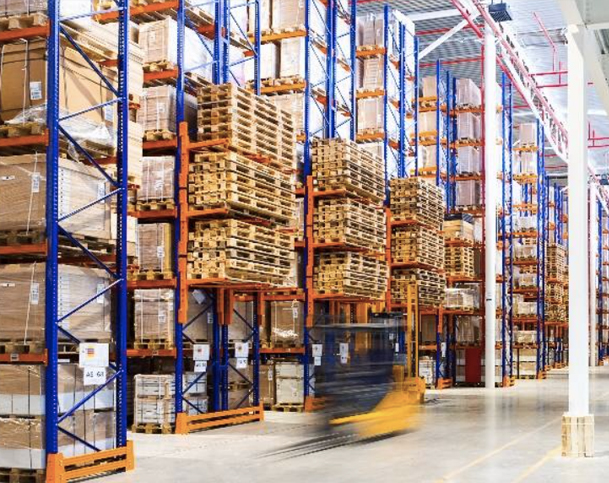Southeast Asia and the Middle East: the second stop for platforms to go overseas, but the "first volunteer" for merchants.
Compared to the Great Seafaring Age 500 years ago, Chinese companies are defining the "New Age of Sailing" with their original business models, high-speed supply chains, ample advertising ammunition or ridiculously low prices.
In the New Age of Sailing, business, logistics and information flows are exchanged globally, but with new players, new targets and new trade methods, overseas merchants are attracted by more new market opportunities and face more new challenges.
However, behind the vague concept of "overseas market" are more than 200 countries and regions with different faces. When a businessman decides to go to sea, where to sell the goods, it becomes one of the primary considerations - to join the North American market, or rely on the product to win the recognition of European consumers? Choose to "go to the South Seas", or in-depth "Western" hinterland?
From an overall perspective, the North American market is the most mature, the largest, and the most intense competition; the European market, although strong consumer power, logistics and payment support is relatively mature, but the norms of commodities and transactions are more restrictive, the acceptance of emerging forms of e-commerce is also lower; Southeast Asia's six countries (Singapore, the Philippines, Indonesia, Thailand, Malaysia and Vietnam) from three years ago, "blue sea Six Southeast Asian countries (Singapore, Philippines, Indonesia, Thailand, Malaysia and Vietnam) are rapidly changing from a "blue ocean" three years ago to a "red ocean", and while shelf e-commerce is slowing down, content e-commerce is becoming a new growth engine; three Middle Eastern countries (Saudi Arabia, the United Arab Emirates and Turkey) are expanding their markets rapidly, but they are still unable to solve the infrastructure problems in a short time.
Comparative quadrant chart of overall characteristics of the four regions
For merchants of different types and categories, the same choice may mean very different endings. Therefore, in the second chapter of Yicai Business School's "2024 Going Overseas Strategy", the analysis perspective is shifted to different regions, helping merchants horizontally understand and compare the "advantages" and "shortcomings" of each region by sorting out the main features and e-commerce platform layouts of the four major cross-border markets of North America, Southeast Asia, Europe and the Middle East. "(This article is the next one: Southeast Asia and the Middle East.
(This article is the next: Southeast Asia and the Middle East)
I. Southeast Asia: A Diverse Market
1. The largest e-commerce blue ocean
Young population is the main group driving the rise of e-commerce in Southeast Asia. The demographic structure is younger, with 70% of the population aged 44 and below, and the consumer population is on average 10 years younger than China.
Geographical proximity and lower cross-border logistics costs. Compared to North America on the other side of the Pacific Ocean, Southeast Asia is much closer to China, which greatly reduces the delivery time and logistics costs for merchants. With the exception of Indonesia, which has broken islands, the other countries have smaller and concentrated land areas and shorter tail-end delivery timeframes. in the first quarter of 2022, the shortest transit time was 1.37 days (Malaysia) and the longest was only 2.68 days (Thailand).
The level of e-commerce development lags behind, with high growth potential. around 2020, the overall level and growth rate of the e-commerce industry in Southeast Asia are basically equivalent to China's development level around 2010 - the growth rate of Southeast Asian Internet users in 2020 will be 11%, which is equivalent to China's growth rate in 2011; and in 2021 E-commerce market size as a proportion of GDP, is the level of China in 2013.
The spread of the epidemic has objectively fueled the explosion of Southeast Asia's e-commerce industry. in 2021, the share of e-commerce sales rises to 20%, up from 5% five years earlier (Euromonitor); and Internet users reach 460 million in 2022, an increase of 100 million in three years. What's more, the epidemic has somewhat reshaped the shopping habits of Southeast Asian consumers, with online shoppers increasing their shopping frequency by more than four times and the retention rate of new online shoppers reaching more than 93%.
The macro policy environment is favorable. on November 15, 2020, 10 ASEAN countries and China, Japan, South Korea, Australia, New Zealand, a total of 15 Asia-Pacific countries formally signed the Regional Comprehensive Economic Partnership (RCEP). in June 2023, the RCEP came into effect for the Philippines, which means that China's cross-border merchants in Southeast Asia's major market countries can enjoy tariffs, financial services and other preferential treatment in many aspects.
As one of the world's fastest-growing e-commerce markets, Southeast Asia has been widely regarded as a "new blue ocean" in the past few years, and China's cross-border e-commerce exports to ASEAN grew 98.5% year-on-year in 2022.
2. A "Mosaic" of Diverse Markets
Although Southeast Asia is often discussed as a whole, the fact is that there are huge differences in the level of economic development, geographic conditions, and socio-cultural aspects of individual countries. Within Indonesia, there is the international city of Jakarta, where commerce is highly developed, as well as traditional villages where paper money is still used for transactions. Therefore, when Chinese merchants with similar products to the Southeast Asian markets, often face very different results, the need to combine the actual local situation and their own product characteristics to suit the local conditions.
For example, although Singapore has the smallest market and population size, but the level of economic development and per capita income are much higher than other countries, so it is still the first stop for most merchants to go overseas. Indonesia has the largest e-commerce market and population size, but the consumption level is relatively low, and there are great differences between different regions.
The "value economy" is a common feature of Southeast Asian e-commerce, but consumers in the Philippines are pursuing "white beauty", which is the highest rate of use of whitening products in Asia; Vietnam is deeply influenced by Japanese and Korean cultures, and prefers refreshing and translucent make-up base, natural color eyeshadow Vietnam is deeply influenced by Japanese and Korean culture, preferring a fresh and translucent makeup base, natural color eye shadow and bright color lip makeup; "Thai-style makeup" focuses on creamy muscle type base makeup, coupled with a full of British thick eyebrows and European-style long eyelashes. Malaysia is influenced by religion and culture, and local consumers favor cosmetics that are free of alcohol and animal ingredients. Singaporeans, on the other hand, are more willing to pay for products with storytelling, novelty and fun (Pan-Asian Beauty Overseas Industry Report 2022).
Therefore, the first and foremost thing for brands to do before entering Southeast Asian countries is to conduct exhaustive market research, while offering different products for different markets based on their own brand tone and product characteristics.
The cover of the first issue of ASEAN, reflecting the cultural diversity of Southeast Asian countries
3. Direct broadcast e-commerce is a new growth point
Southeast Asia's e-commerce industry mainly relies on third-party e-commerce platforms, and after a long period of development has formed a pattern of "two giants + regional platforms". The two giants refer to Singapore-based Shopee and Lazada, and Shopee's GMV will account for 56% of the overall scale in Southeast Asia in 2022, while Lazada's GMV will rank second in five countries and third in Vietnam. Regional platforms include Tokopedia, a local Indonesian e-commerce company, and Tiki, a local Vietnamese e-commerce company.
In the post epidemic era, the growth rate of traditional shelf e-commerce began to slow down, especially Shopee's growth rate slowed down sharply, sustained losses made the low price subsidies unsustainable, and the parent company Sea carried out 10% layoffs. lazada's GMV and number of users also stagnated.
Content e-commerce based on short videos and live streaming with goods has become a new growth point in Southeast Asia. 2022 TikTok's GMV in Southeast Asia grew at an average monthly compound rate of nearly 90% (Titanium Media). 2023 GMV is expected to be $15 billion, which is 3.75 times higher than that of the previous year, and TikTok's market share in Vietnam has surpassed that of Lazada and risen to become the second largest platform in Vietnam.
The outbreak of the live broadcasting industry has made live broadcasting equipment such as cell phone holders, fill-in lights, recording equipment, etc., a windfall category in Southeast Asia.During Lazada's Double 12 in 2023, the cross-border camera accessory category saw a 38% year-on-year increase in annual GMV, with tripods, selfie sticks, and PTZ stabilizers becoming hot-selling explosive models.
II. The Middle East: the "big cake" that has not yet been baked.
1. Saudi Arabia, Turkey and the United Arab Emirates are key markets
For Chinese cross-border merchants, the so-called "Middle East" e-commerce market actually refers to Saudi Arabia, the United Arab Emirates and Turkey. Compared with other neighboring countries, these three countries have a certain size of population base, high income level, and relatively stable political situation. After the epidemic, e-commerce has gained a sustained high speed development, which makes them a new landmark on the map of Chinese e-commerce companies and merchants after Europe, America, and Southeast Asia.
In 2022, Turkey's e-commerce turnover reached 800.7 billion lira (about RMB 183.6 billion), a year-on-year increase of 109%; in 2023, the UAE's e-commerce sales are expected to reach $6 billion (Dubai Customs); in the second quarter of the same year, the total number of Saudi e-commerce business registrations reached 35,314, a year-on-year increase of 21%, and the number of registered logistic companies reached 4,288, an increase of 83% (Saudi Ministry of Commerce). 83% (Saudi Ministry of Commerce).
Compared with other countries in the Middle East, the rapid growth of e-commerce in the UAE, Saudi Arabia and Turkey is mainly due to the following factors:
Favorable policy environment
Saudi Arabia put forward its "Vision 2030" in 2016, shifting from dependence on oil exports to multi-industry development, which includes promoting the development of e-commerce, strengthening digital infrastructure, establishing a unique regional logistics hub, and regional and international integration;
The UAE proposed the "Dubai E-Commerce Strategy" in 2019, setting a target of 12 billion dirhams (about 23.5 billion yuan) for e-commerce to contribute to GDP by 2023;
Turkey's 2022 E-Commerce Law, which focuses on consumer protection and information flow, and its 2023 revision, which strengthens the focus on the market power of e-commerce platforms.
Higher income levels
According to IMF 2023 data, the UAE's GDP per capita is $50,000 and Saudi Arabia's is $32,000, both of which are high-income, wealthy countries. Turkey's GDP per capita of $13,000 is also higher than the world average with China.
In the UAE, citizens' healthcare and education costs are borne by the state. With the development of e-commerce, local consumers have demonstrated strong purchasing power, for example, the sales of high-end models of Anchor Innovative Sweeper (over $1,000) are growing rapidly. Meta reports that 80% of Saudi consumers shop online at least once a day, spending around US$150 on a single order.
Weak light industry, strong demand for consumer goods
Due to the general weakness of light industry in the Middle East, there is a strong demand for all kinds of consumer goods, with electronic products, clothing, shoes and hats, and household personal care products all being popular categories. There are some noteworthy consumer trends in the Middle East:
In Saudi Arabia and the UAE, there are two main types of consumers. One is nationals, with high average income levels, who prefer advanced electronic products, clothing and cosmetics, and household goods; the other is foreign workers from neighboring countries, who mainly buy cost-effective products;
Female consumers, constrained by conservative social mores that make offline shopping inconvenient, are quickly becoming e-commerce users. in 2020, the average Saudi Arabian woman will spend $909 per year on cosmetics, close to twice as much as women in the UK ($505) and more than nine times as much as women in China (around $100) (discount site Picodi);
The high birth rate has led to strong demand for mother and baby products as well.Hibobi (Hi Baby), a mother and baby indie site brand founded in 2019, has more than 10 million registered users in the Middle East market and annual revenues of $50 million;
Daily clothing such as black robes, white robes and hijabs rely heavily on imports, with a market size of nearly 100 billion dollars. Eight million hijabs come from Chinese merchants every year.
Compared with Europe and the United States, the infrastructure of the payment and delivery chain in Saudi Arabia, the UAE and Turkey is still very poor. Luan Tian, CEO of Kodi Overseas, who has been living in Dubai for a long time, introduced that most of the Middle East home addresses are not managed by door number, which makes it difficult to establish a common postal code system.
Secondly, the payment method is still dominated by cash on delivery, and 30% of the transactions in 2023 are still not paid for through online payment, making it difficult to solve the problem of receiving efficiency and returns. Each country in the Middle East also has different "minefields" in terms of religious customs, and merchants operating in other regions need to set up specialized product lines for the Middle East market, and differentiate in terms of styles and elements.
2. "Second tier" business new blue ocean
Although compared to a few years ago, Saudi Arabia, Turkey and the United Arab Emirates, the e-commerce market has grown significantly, but compared with North America and Europe, the market as a whole, the "cake" is still too small; compared with Southeast Asia, merchants enter the market invisible threshold is higher.
According to Luan Tian observation, the Middle East as a key market cross-border merchants, many of them are in the "second tier" of small and medium-sized merchants, they either want to avoid the United States has been relatively involution of the competitive situation, or the product is not enough to open up the European market, or want to get a bigger profit margin than Southeast Asia. For mature merchants with strong competitiveness, the Middle East is obviously not enough to become the "first station" of going overseas, and is more of a supplement to the global business layout in the middle and late stages.
The Middle East is also the "second station" of the platform to go overseas.
In Europe and the United States to stand firm SHEIN, entered the Middle East in 2016, 2022 in Turkey to build a "small single fast reaction" supply chain network, 20% of the sales of the European market from the Turkish factory. Currently, Shein's local sales in the Middle East have accounted for 13% of total sales, and the unit price exceeds that of the United States.
After setting up dozens of sites in North America, Europe and Southeast Asia, Temu started to go online one after another in August 2023 in Israel, Saudi Arabia and the UAE sites, also focusing on low-priced promotional strategies, offering free shipping, big discounts, low-priced earning and other promotional activities.In the second half of 2023, Temu's monthly visits in Israel reached 1.12 million times.
In 2021, ByteDance invested in iMile, a local logistics company in the Middle East, in preparation for entering the local market. After the completion of the content infrastructure and physical infrastructure, in the second half of 2023, TikTok opened a fully managed cross-border e-commerce model in Saudi Arabia. But in Luan Tian's view, TikTok's high coverage in the Middle East makes hobby e-commerce more likely to be a point of business opportunity for Chinese merchants, with women's clothing and accessories, 3C digital products and cool artifacts all hot categories on TikTok.
In March 2024, SmarTone continued its marketing formula in South Korea by signing two famous Saudi football stars as spokespersons in the Middle East and putting huge posters in famous neighborhoods of Riyadh, the capital of Saudi Arabia. The two soccer stars are highly popular in the Middle East, with a cumulative total of 2.4 million fans on their social accounts.
Ali's presence in the Middle East, in addition to the layout of the speedy sell-through, and with the cooperation of Cainiao to provide delivery time, mainly rely on the investment in Turkey's No. 1 platform trendyol. ali's third quarter fiscal year 2023 financial report shows that trendyol orders grew 50% sequentially, driving the overall order volume of the international retail business to grow by 3% year-on-year, and revenues grew by 26% year-on-year, reaching $14.644 billion. Trendyol's growth makes Ali willing to invest more "bets" in the Middle East. 2023 September trendyol released a statement that Ali plans to invest $ 2 billion in Turkey, for the construction of new logistics and data centers in the region.
The Middle East has also become the Amazon Chinese sellers to expand the new site willingness value of the first region, as of June 2024, has been on the Amazon Middle East station of Chinese sellers, compared with the same period last year, an increase of more than 40%. To a certain extent, this is related to the platform guidance. 2023 November, Amazon in the Middle East station launched "10,000 stores sail plan", in the next three years each year to support more than 10,000 Chinese sellers stationed in the Middle East station; in February 2024, Amazon also for the new sellers stationed in the Middle East station, to provide the first year of the 50% direct commission reduction incentives, Amazon also plans to build the UAE, the United Arab Emirates, the United States and other countries. Amazon also plans to build the Middle East's most advanced logistics center in the UAE and spend $100 million to establish a logistics base in Turkey.
-
 Capital Market Malaysia to Bolster Growth Trajectory of High-Growth SMEsApr,02,2024
Capital Market Malaysia to Bolster Growth Trajectory of High-Growth SMEsApr,02,2024 -
 Technology, Supply Chain Adaptations Drive Optimism in APAC Businesses Amid Geopolitical UncertaintyApr,02,2024
Technology, Supply Chain Adaptations Drive Optimism in APAC Businesses Amid Geopolitical UncertaintyApr,02,2024 -
 Southeast Asia and the Middle East: the second stop for platforms to go overseas, but the "first volunteer" for merchants.Apr,02,2024
Southeast Asia and the Middle East: the second stop for platforms to go overseas, but the "first volunteer" for merchants.Apr,02,2024









 Links
Links